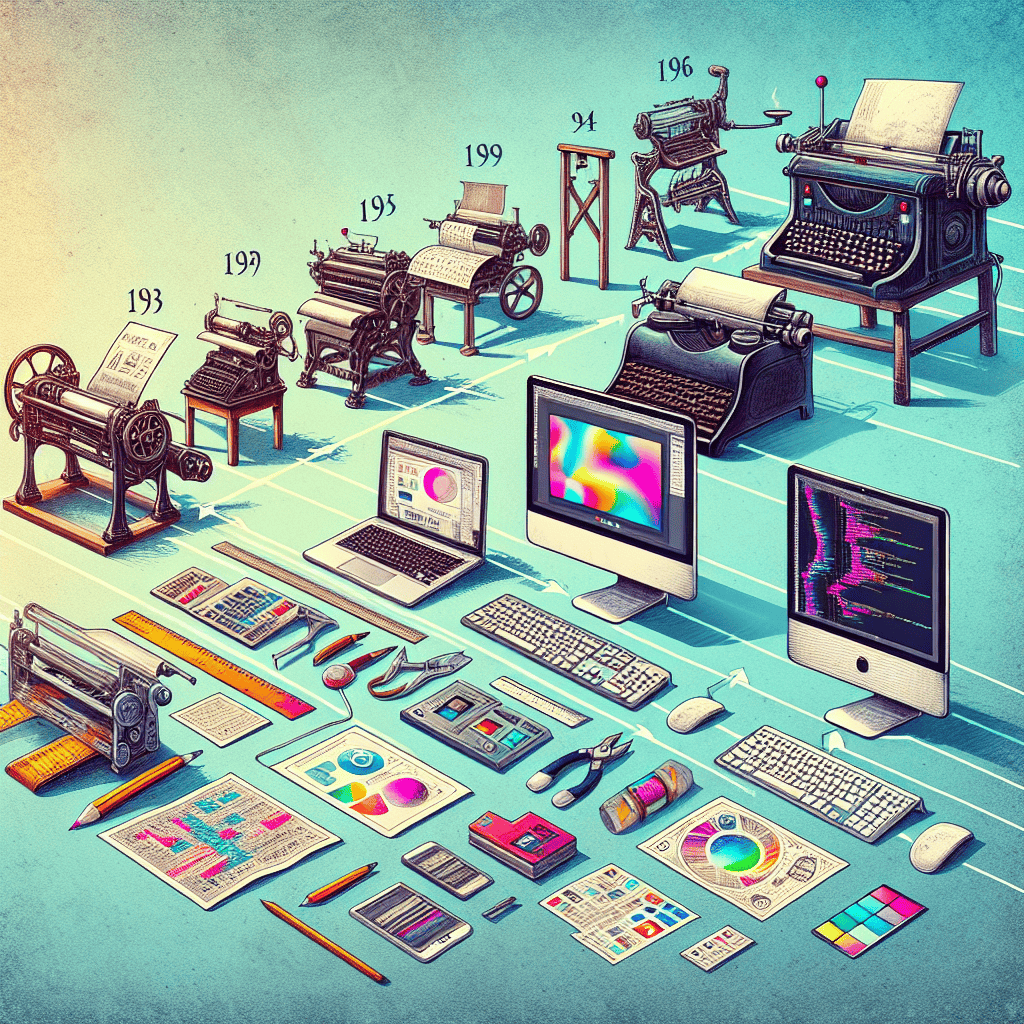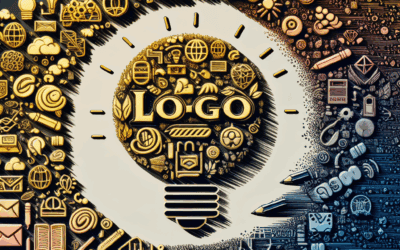In the span of a few decades, digital design has undergone a transformative journey that has fundamentally shifted how we communicate visually. From the tactile experience of print media to the limitless potentials of web design, this evolution reflects broader changes in technology, audience interaction, and overall design philosophy. In this article, we will explore this evolution in detail, shedding light on how digital design has adapted to meet the needs of various platforms and users.
The Birth of Digital Design
The seeds of digital design were sown in the late 1980s and early 1990s when graphic design software like Adobe Photoshop and Illustrator emerged. Before this, design was predominantly centered around print media, where typography, layout, and illustrations were crafted using physical materials. This shift to digital tools revolutionized the design process, offering unprecedented flexibility and creativity.
From Print to Screen: The Early Days of Web Design
The introduction of the World Wide Web in the early 1990s marked a pivotal moment in digital design. Designers faced new challenges: how to translate visual aesthetics, once anchored in print, into an online environment. Early web pages were straightforward, composed mainly of text with rudimentary graphics and simple layouts that prioritized functionality over form.
HTML emerged as the foundational language of web design, allowing designers to structure content. However, limited browser capabilities meant that many design elements familiar to print media couldn’t be replicated. The “early web” aesthetic reflected this, characterized by basic color palettes and unrefined typography. Still, this simplicity laid the groundwork for a rapidly evolving digital landscape.
The Rise of User-Centered Design
As the internet matured in the late 1990s and early 2000s, the field of user experience (UX) gained prominence. Designers began to realize that creating an engaging online experience was just as important as aesthetic appeal. This led to a shift towards user-centered design principles that prioritize the needs and behaviors of real users.
Incorporating concepts such as usability testing and accessibility became essential. Designers began to adopt a more iterative approach, leveraging feedback to refine their projects continuously. This period also saw the emergence of web standards and guidelines aimed at making the internet more accessible to diverse audiences.
The Advent of Responsive Design
With the proliferation of mobile devices in the late 2000s, responsive design became a game-changer in digital design. The challenge of ensuring websites looked good and functioned well across various devices and screen sizes led to innovative design solutions.
Responsive web design (RWD) leverages fluid grids, flexible images, and media queries to create a seamless experience across devices. This approach not only enhances user experience but also has significant implications for SEO. Search engines, including Google, have prioritized mobile-friendly websites, making responsive design a necessity rather than an option.
The Integration of Animation and Interactivity
As web technologies advanced, designers began to experiment with animation and interactivity. The rise of JavaScript libraries such as jQuery democratized complex animations, allowing designers to create dynamic user interfaces that engaged visitors in new ways.
Micro-interactions—small animations that provide feedback to user actions—became a staple of modern web design. Whether it’s a button changing color when hovered over or a subtle loading animation, these elements enhance usability and create a more enjoyable experience, encouraging users to spend more time on websites.
Minimalism and Flat Design Trends
In parallel with technological advancements, design trends have also evolved. In the 2010s, flat design emerged as a response to the overly skeuomorphic designs that mimicked real-world objects. Flat design embraced simplicity, the use of clean lines, and a bold color palette. This approach made websites faster and easier to navigate, aligning with the need for responsive design.
Alongside flat design, minimalism took hold, focusing on stripping away unnecessary elements to allow content to shine. This trend reflects a broader cultural shift towards simplicity and efficiency in digital products, leading to increased user engagement and satisfaction.
The Impact of AI and Machine Learning in Digital Design
As we moved into the 2020s, technologies such as artificial intelligence (AI) and machine learning began to influence digital design. AI tools facilitate personalized user experiences by analyzing user data and tailoring content accordingly. Chatbots, for instance, provide real-time assistance and enhance user interaction without human intervention.
Machine learning algorithms are also set to transform design workflows, enabling tools that can automate mundane tasks, leaving designers free to focus on creativity and strategy. This shift is not only making the design process more efficient but is also raising ethical questions about creativity and originality in design.
The Future of Digital Design
As digital design continues to evolve, staying ahead of trends and innovations will be crucial for creators. The metaverse, augmented reality (AR), and virtual reality (VR) are at the forefront of new possibilities, opening up immersive environments that challenge traditional design paradigms.
Moreover, increased attention to inclusivity and accessibility is reshaping how designers think about their work. As diverse audiences engage with digital products, the emphasis on creating experiences that everyone can enjoy—regardless of age, ability, or background—will become a hallmark of successful digital design.
Conclusion: Embracing Change in Digital Design
The evolution of digital design from print to web serves as a powerful reminder of the adaptability required in this industry. As technology continues to advance, designers must not only embrace change but also anticipate it. The transition from print to web, the rise of responsive and user-centered design, and the latest trends in AI all underline the importance of flexibility in the design process.
Future designers would do well to stay attuned to both technological innovations and user needs, recognizing that their roles are not merely about aesthetics but also about creating meaningful experiences. As the digital landscape continues to evolve, the potential for creativity and impact is boundless.
USA Marketing Pros is your reliable partner for effective web design, SEO, and digital marketing services. Based in Arlington, VA, we proudly serve businesses across Northern Virginia and the broader Washington, DC area. Contact us today to see how we can help your business grow at (202) 888-5895 or visit us at 701 12th St S, Arlington, VA 22202.
Looking for Affordable Business Logo Design? Check out our Logo Design Service
Discover all our Digital Marketing Services
Reserve a Logo Design Strategy Call




0 Comments